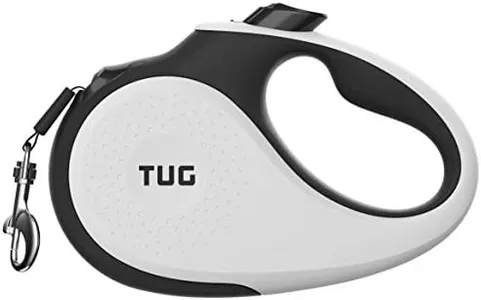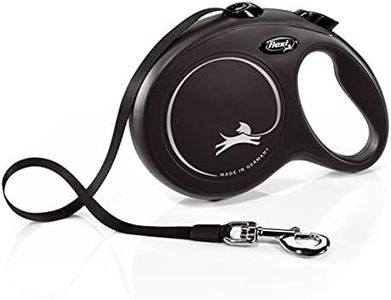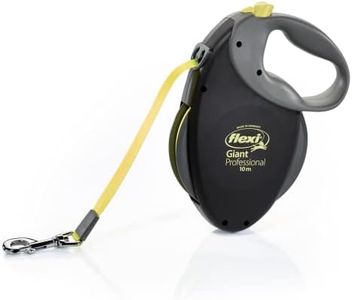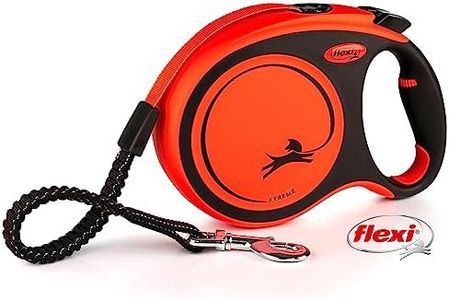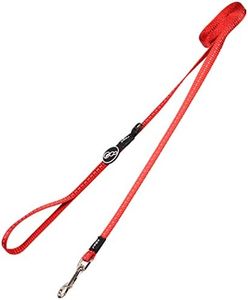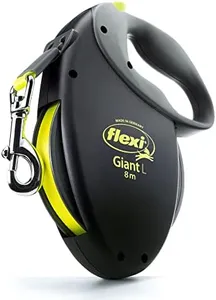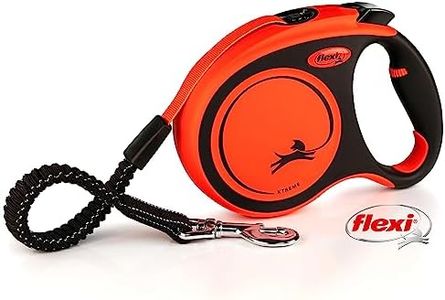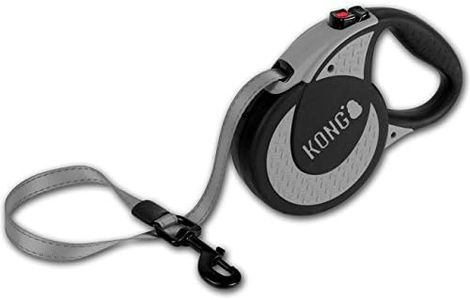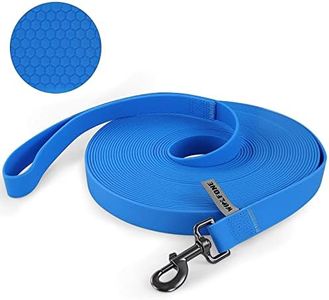We Use CookiesWe use cookies to enhance the security, performance,
functionality and for analytical and promotional activities. By continuing to browse this site you
are agreeing to our privacy policy
10 Best Dog Leashes
From leading brands and best sellers available on the web.Buying Guide for the Best Dog Leashes
Choosing the right dog leash is important not only for your dog's safety, but also for your comfort and control during walks, training, and outings. The right leash can help you better manage your pet, ensure pleasant walks, and prevent unwanted incidents. When picking a leash, think about your dog's size, strength, behavior, and typical activities. Consider where you'll use the leash most often—on city sidewalks, in parks, or for hikes. Your own preferences, like grip comfort and ease of use, also matter.LengthLeash length determines how much freedom your dog has to move during walks and how much control you maintain. Standard leash lengths range from about 4 feet to 8 feet. Shorter leashes (around 4 feet) are best for training or crowded areas where you need close control, while medium lengths (5-6 feet) work well for general walks. Longer leashes (7-8 feet or more) can be good for open spaces where your dog can safely explore a bit further. Think about your walking environment and your dog's behavior—choose shorter for busy places and more control, or longer for relaxed walks in open areas.
MaterialLeashes come in various materials such as nylon, leather, rope, and chain. Nylon is lightweight, durable, and easy to clean, making it a practical choice for many dog owners. Leather is strong, often comfortable to hold, and ages well, but usually costs more. Rope leashes are sturdy and often used for active or strong dogs, while chain leashes resist chewing but are heavier. Think about your dog’s chewing habits, strength, and any allergies or sensitivities when picking the right material.
Width and StrengthThe width and overall strength of a leash determine how well it can withstand pulling and jerking, particularly with larger or stronger dogs. Narrow leashes are best for small dogs or puppies, as they are lightweight and easy to handle. Wider leashes provide added strength and are more suitable for medium to large dogs or those that pull. Match the width and strength to your dog's size and pulling tendency—a big, strong dog needs a sturdy, wider leash, while a small dog will be fine with a lighter option.
Clip TypeThe clip, which attaches the leash to your dog’s collar or harness, is crucial for safety and convenience. Common types include bolt snaps and trigger snaps. Bolt snaps are simple and reliable, while trigger snaps are larger and considered even more secure. Check that the clip is easy to use and robust enough to withstand your dog’s strength. If you have a very strong or large dog, or if your dog pulls a lot, opt for a heavy-duty clip to prevent accidental detachment.
Handle Comfort and FeaturesThe handle area of a leash is where you’ll be holding on for every walk, so comfort matters. Some leashes have padded or ergonomic handles, which reduce strain on your hands during longer walks or with dogs that pull. Features like multiple handles, traffic loops for close control, or hands-free options might also be available. Consider your walking habits—if you value comfort and often take long walks or have a strong dog, look for padded or extra handles.
Special Leash TypesThere are specialized leashes such as retractable leashes, training leads, and double-dog leashes. Retractable leashes offer adjustable lengths, but provide less control and aren't always suitable for strong or reactive dogs. Training leads are extra long and useful for teaching recall or obedience commands. Double-dog leashes allow you to walk two dogs at once. Consider your needs: if you're training, need flexibility, or want to walk multiple dogs, a specialty leash might be right for you—but always prioritize safety and control.
